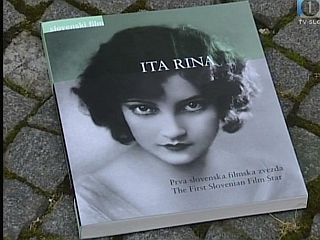
Even when she was a little girl, Italina Kravanja wanted to be an actress. Born in 1907 in the small town of Divača on Slovenia’s wind-swept Karst plateau, little “Ida”, as everyone called her, wasn’t destined for international fame. She wasn’t even a particularly good student and had to repeat third grade.
But when Kravanja turned 19, she entered a beauty contest. It was a decision that ended up changing her life. She won the contest, was crowned Miss Slovenia, and became eligible to take part in the competition for Miss Yugoslavia in Zagreb. However, she arrived too late in the Croatian capital and was kept out of the running.
Her trip was not in vain, however. At the event, she was spotted by a Croatian movie theater manager. He sent several photos of Kravanja to Peter Ostermayr, an influential German movie producer who headed Ostermayr Film. He liked what he saw and invited Kravanja to sign a contract with his Berlin-based studio.
For Kravanja, this was a dream come true. Despite strong objections from her mother, she left Slovenia for the cosmopolitan glamor of Berlin in 1927, where she became known as Ita Rina.
In the late 1920s, Rina appeared in various films, but her roles were generally minor. Her big breakthrough came in 1929 with the lead role in the silent movie Erotikon, directed by Gustav Machatý, an important name in interwar Czech film. The movie was extremely daring for the time; it tackled the issue of female sexuality and even contained an implied sex scene. Many considered the movie scandalous, but the publicity only strengthened Ita Rina’s status as a fresh and exciting movie star.
Following Erotikon, Ita Rina made a successful transition to talking pictures, a feat that had eluded many stars of the silent era. She even received an offer to move to Hollywood, and international stardom was now within her reach. However, her international career was cut short by her marriage to Miodrag Đorđević, a Serb whom she had met several years earlier. Rina converted to the Serbian Orthodox faith and changed her name once again, adopting the Serbian first name Tamara. Her husband convinced her to decline the offer from Hollywood and to retire from the movie business. In the years ahead, she appeared in several bit roles, but her career was effectively over. She eventually moved to Belgrade with her husband.
After World War II, the former Ita Rina had a difficult time getting any film roles, an experience shared with many pre-war personalities. It took a letter to President Tito for her to get a consulting job with the Belgrade-based Avala Film. She appeared in just one post-war film.
The Đorđevićs moved to Budva, Montenegro, where Tamara spent the final years of her life. In old age, her knowledge of the Slovenian language began to fade, but she still fondly remembered her Slovenian homeland. Tamara Đorđević, born Italina Kravanja, and made famous as Ita Rina, died in 1979, at the age of 71.
Her hometown of Divaca now houses the Museum of Slovenian Film Actors, which includes a permanent collection devoted to Ita Rina -- Slovenia’s very own star of the silver screen.

































































